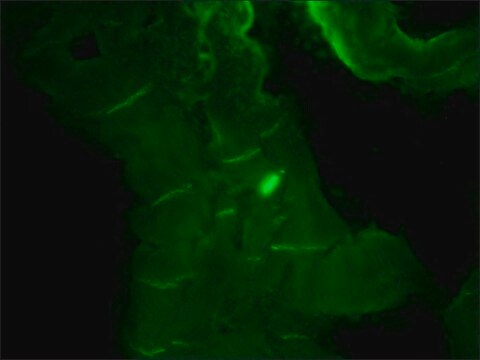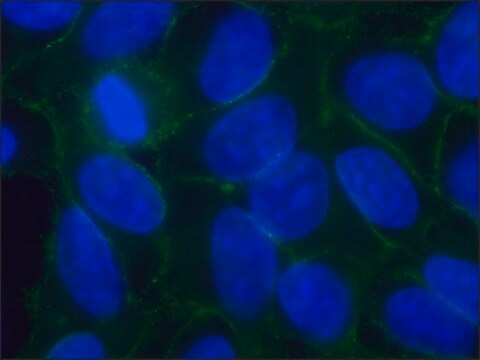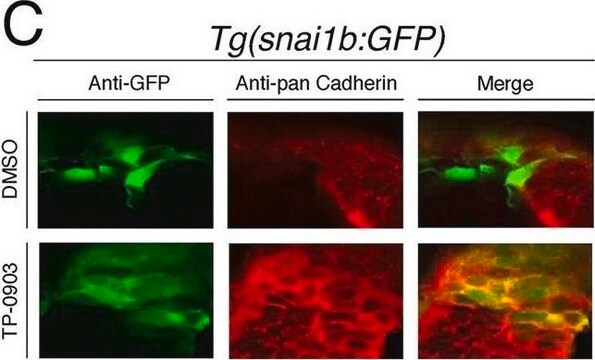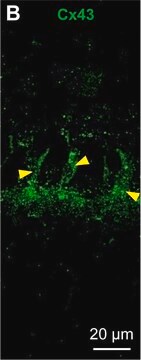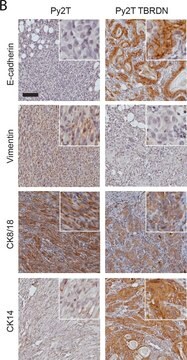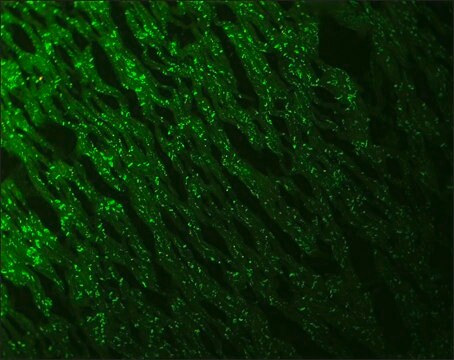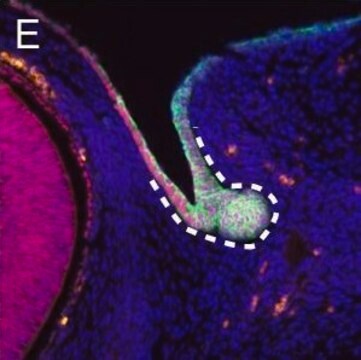C1821
Monoclonal Anti-Pan Cadherin antibody produced in mouse
clone CH-19, ascites fluid
Synonym(e):
Monoclonal Anti-Pan Cadherin
About This Item
Empfohlene Produkte
Biologische Quelle
mouse
Konjugat
unconjugated
Antikörperform
ascites fluid
Antikörper-Produkttyp
primary antibodies
Klon
CH-19, monoclonal
Mol-Gew.
antigen 135 kDa
Enthält
15 mM sodium azide
Speziesreaktivität
canine, frog, snake, guinea pig, chicken, pig, feline, bovine, rabbit, hamster, Psammomys (sand rat), goat, rat, human, sheep, mouse
Methode(n)
immunohistochemistry (formalin-fixed, paraffin-embedded sections): 1:500 using protease-digested animal heart sections
indirect immunofluorescence: 1:500 using cultured MDBK cells
microarray: suitable
western blot: suitable
Isotyp
IgG1
UniProt-Hinterlegungsnummer
Anwendung(en)
research pathology
Versandbedingung
dry ice
Lagertemp.
−20°C
Posttranslationale Modifikation Target
unmodified
Angaben zum Gen
human ... CDH1(999) , CDH2(1000) , CDH3(1001)
mouse ... Cdh1(12550) , Cdh2(12558) , Cdh3(12560)
rat ... Cdh1(83502) , Cdh2(83501) , Cdh3(116777)
Suchen Sie nach ähnlichen Produkten? Aufrufen Leitfaden zum Produktvergleich
Allgemeine Beschreibung
Cadherins that are primarily located in areas of cell-cell contacts are involved in selective cell sorting and in the mechanical cytoplasmic response. They are implicated in morphogenetic processes, intercellular signalling and in tumor invasiveness and metastasis.
Multiple cadherins have been characterized from diverse species and tissues including E-Cadherin, N-Cadherin (A-CAM), P-Cadherin, V-Cadherin, R-Cadherin and T-Cadherin. Specific polyclonal antibodies against a highly conserved sequence from the cytoplasmic C-terminal of N-Cadherin has been prepared.
Spezifität
Immunogen
Anwendung
- fluorescence imaging
- immunohistochemistry
- western blotting
- immunoblotting
- immunofluorescence
Biochem./physiol. Wirkung
Haftungsausschluss
Sie haben nicht das passende Produkt gefunden?
Probieren Sie unser Produkt-Auswahlhilfe. aus.
Empfehlung
Lagerklassenschlüssel
12 - Non Combustible Liquids
WGK
nwg
Flammpunkt (°F)
Not applicable
Flammpunkt (°C)
Not applicable
Analysenzertifikate (COA)
Suchen Sie nach Analysenzertifikate (COA), indem Sie die Lot-/Chargennummer des Produkts eingeben. Lot- und Chargennummern sind auf dem Produktetikett hinter den Wörtern ‘Lot’ oder ‘Batch’ (Lot oder Charge) zu finden.
Besitzen Sie dieses Produkt bereits?
In der Dokumentenbibliothek finden Sie die Dokumentation zu den Produkten, die Sie kürzlich erworben haben.
Kunden haben sich ebenfalls angesehen
Unser Team von Wissenschaftlern verfügt über Erfahrung in allen Forschungsbereichen einschließlich Life Science, Materialwissenschaften, chemischer Synthese, Chromatographie, Analytik und vielen mehr..
Setzen Sie sich mit dem technischen Dienst in Verbindung.